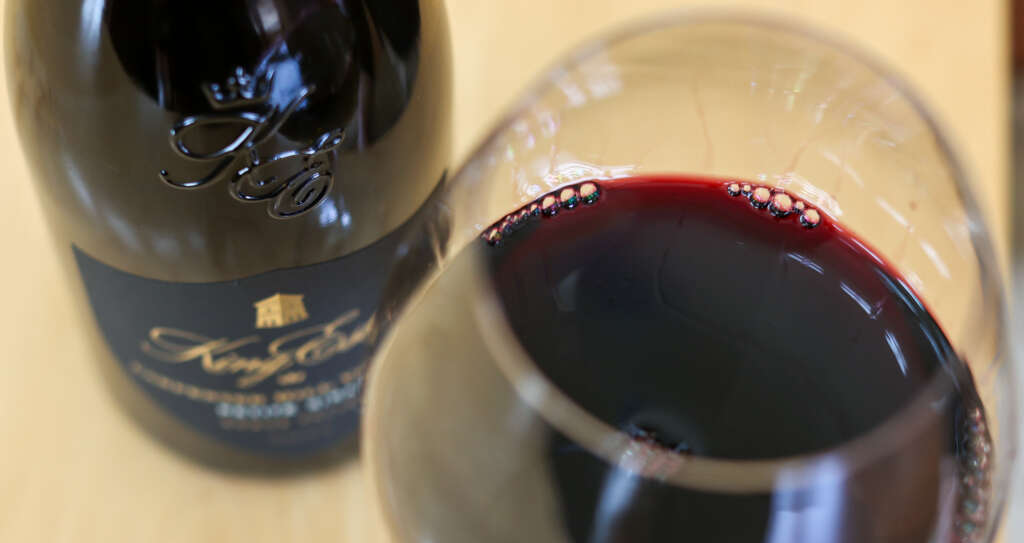The first thing to notice about Petite Sirah is the striking color in the glass. “It stands out for its inky black-blue color,” says Associate Winemaker Barrett Rosteck. The color is the first indication that Petite Sirah is unlike better known reds such as Pinot Noir or Cabernet Sauvignon.

Petite Sirah, known as “Durif” outside the United States, originated in southern France. The result of a crossing between Syrah and a nearly extinct grape from southern France called Peloursin, Petite Sirah is now grown predominantly in California and accounts for less than one percent of U.S. wine production. Heavier than Cabernet Sauvignon, a Bordeaux varietal, Petite Sirah is notable for deep, rich flavors and big, chewy tannins, which give wine that astringent, mouth-drying sensation.
On the other end of the spectrum is Pinot Noir, a Burgundian varietal and Oregon’s signature grape. Pinot Noir is known for being delicate and finicky, in stark contrast to the more robust Petite Sirah. “While Pinot Noir must be gently destemmed, Petite Sirah is crushed to break open the grapes and get the maceration going,” Barrett says. “We have to intentionally rough Petite Sirah grapes up a bit.”
Bigger reds like Petite Sirah, with its large clusters and small, thick-skinned berries, can be challenging for winemakers to manage, Barrett notes. The high skin-to-juice ratio from the compact berries means less dilution in the juice and a lot of extraction and color. The result is a less refined, more rustic and rugged wine. Decant at least an hour before drinking, if you can wait. Petite Sirah pairs well with heavy meat, game, cheese and classic Italian meals – foods that are as big and bold as the wine itself.

The vineyard and the wine
Carpenter Hill Vineyard is located on a steep, east-facing slope at the base of the Siskiyou Mountains in Phoenix, Oregon. The characteristic aromas of blueberry, chocolate, pepper and spice are evident on the nose, along with roast coffee, cigar and graphite. Full-bodied with chewy tannins right from the start, the mid-palate shows fleshy tannins and acidity that bring out dark fruit like plum and fresh violets. Lengthy tannins provide depth and richness to the finish.
